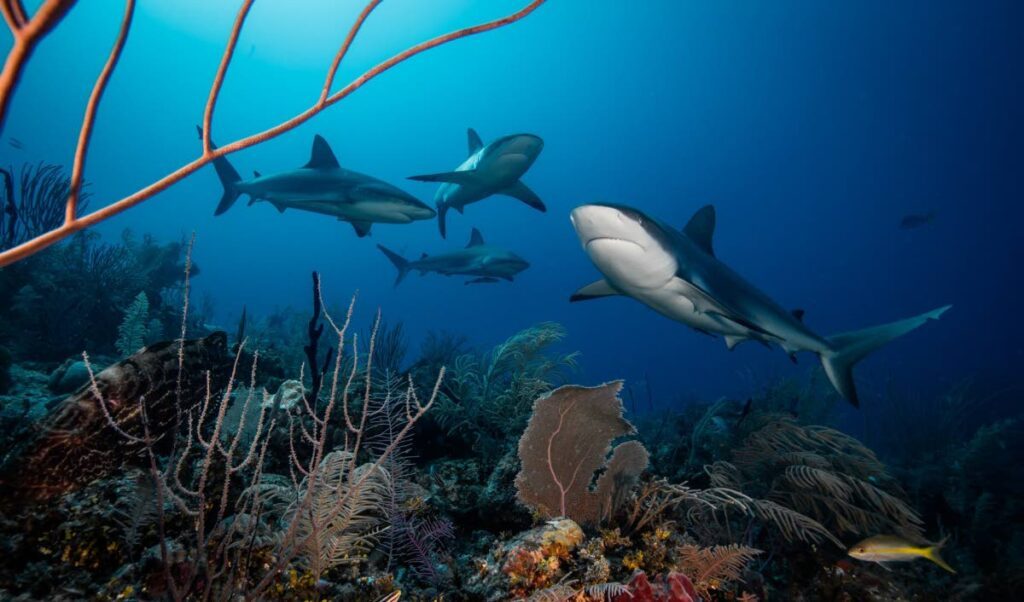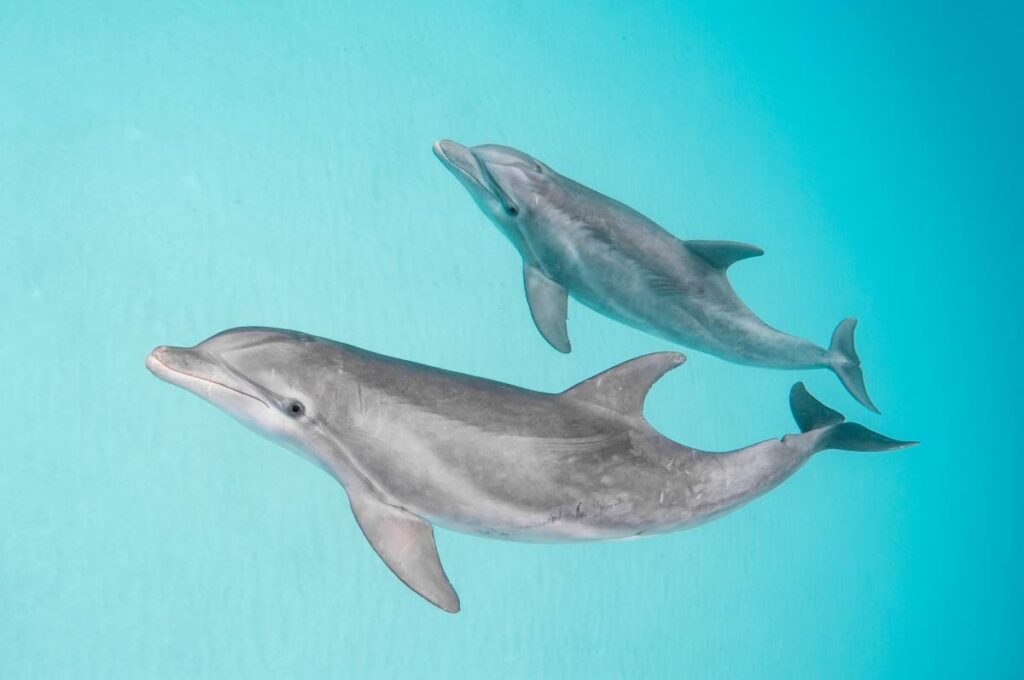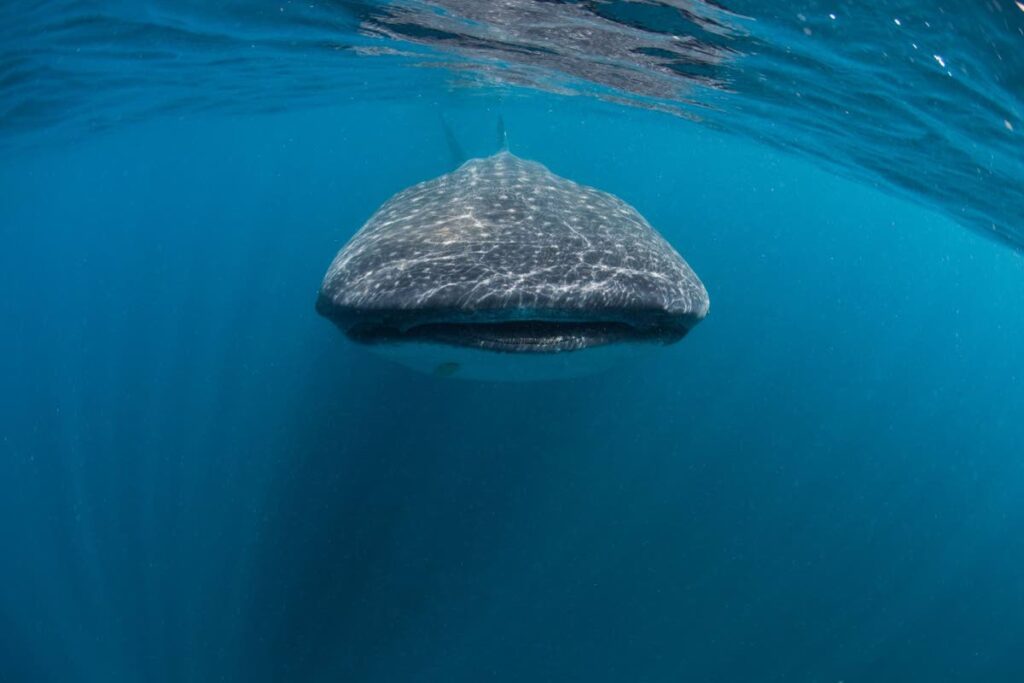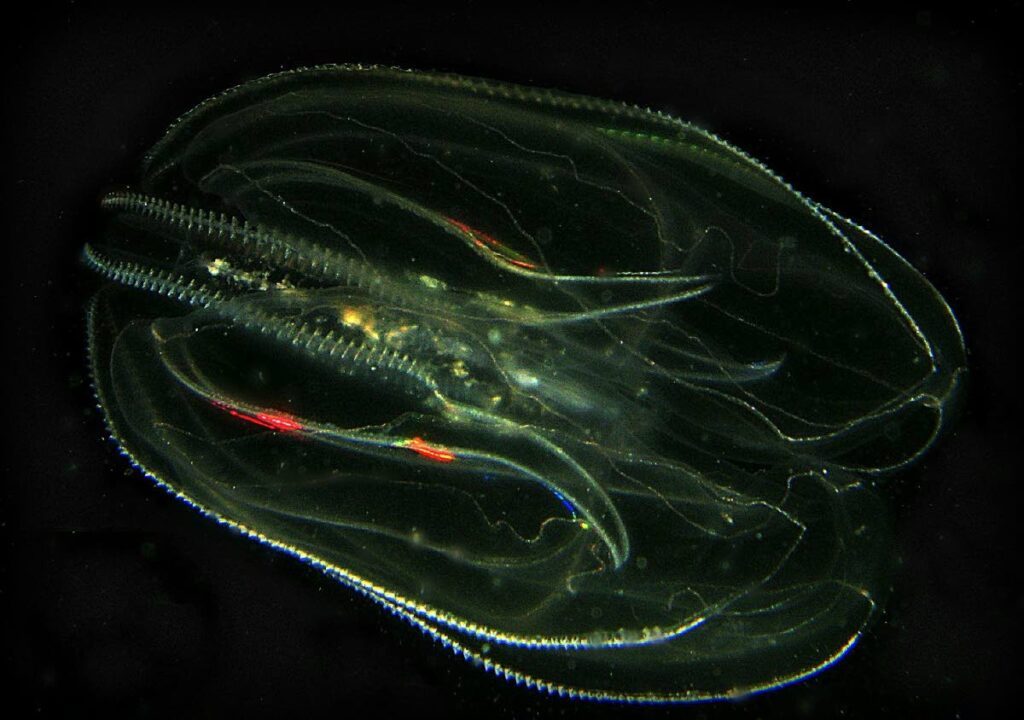News from the ocean

Scientists are finding out more about the creatures in the ocean even as they continue to be threatened by human-induced global warming.
Dr Anjani Ganase looks at recent research on coral reefs, dolphins, whale sharks and jellyfish. How will they survive human traffic and warmer oceans?
Protected coral reefs mean more fish
Marine Protected Areas (MPA), according to scientific studies, account for about ten per cent of global fish stocks. Existing MPAs make up just 8.4 per cent of the ocean and merely three per cent are fully protected and equivalent to 1244 reefs around the world.
A study led by the University of Sydney in Australia has estimated the amount of fish biomass in the world’s ocean that results from the presence of no-take, marine protected areas.
The study reveals the importance of MPAs to boosting fish productivity especially when associated with coral-reef conservation. Coral-reef marine parks less affected by human activities were associated with higher fish biomass compared to MPAs chronically affected by humans.

Interestingly, the model found that fully managed MPAs resulted in greater fish biomass gains compared to those with only fisheries regulations; but in areas with valuable reefs fisheries management was still effective in conserving fish stocks. As seen in previous studies, large, old MPAs were the most productive.
Countries have committed to 30x30 goal – meaning 30 per cent of our oceans should be protected by 2030. It is estimated an increase in global MPAs of coral reef to 30 per cent would boost fish production up to 28 per cent according to the study model.
Currently, less than five per cent of reefs in the Caribbean are fully protected, despite being home to ten per cent of the world’s coral reefs. In the Caribbean, the Mesoamerican Reef, Colombian reefs, Cuba, and ABC islands were considered in the model. Will Trinidad and Tobago and the Lesser Antilles ever adopt full marine protection of coral reefs to restore their fish supply?
Frankenstein of the sea
Comb jellies, classified as Ctenophores, are non-stinging, gelatinous organisms that drift in the ocean, including the waters around TT. They are known for their flashing light shows at night, entertaining divers.
Scientists recently discovered a particularly large and oddly shaped comb jelly, aka sea walnut (Mnemiopsis leidyi), in a saltwater aquarium. The large individual had two bottom sections and two sensory structures, all of which were functioning.
Through experimentation, it turns out that comb jellies are unable to differentiate their body from the bodies of other comb jellies. As a result, under circumstances where several comb jellies have been damaged or chewed into pieces, they can fuse their body with that of another comb jelly individual.

This was tested experimentally: sections of different comb jellies were placed in close proximity in tanks. Within 24 hours, the comb jelly parts paired up and fused, with all organs fully functioning; this occurred in 90 per cent of the experimental trials.
This evolutionary trait may allow for quick reassembly after damage (though most organisms have developed self-recognition systems which are important for building immunity responses.) Will giant jellies patched together be the ultimate survivors?
When dolphins smile
Humans viewing the upturned jaw of dolphins assume that this is a permanent anatomical smile. Now researchers have actually looked into when and what makes bottlenose dolphins smile.
For many terrestrial mammals, including apes, lions, dogs and even humans, the open-mouth smile is well-recorded during social interactions and play with peers. These smiles are presented to the peers when directly face to face, and the open mouth smile is quickly reciprocated through a mimicked smile by the peer.
Scientists from the University of Pisa, Italy, found that bottlenose dolphins in captivity often engaged in friendly play with their peers in the form of acrobatics, play-fighting, and chasing. During the play fights, dolphins would give their playmate the opportunity to counter-attack, along with chasing, biting and tail-slapping.

Photo couresy aqua photos -
On these occasions of play, when the dolphins are facing each other an open-mouth smile displayed by one dolphin was quickly reciprocated by the second dolphin. Dolphins only smiled when playing with another dolphin. They did not display the open-mouth smile when interacting with trainers, when they’re alone or during any aggressive display; instead, the mouth was closed. The next steps in the study would look at any vocalisations that may be equivalent to laughter in humans during these fun interactions by dolphins.
Whale sharks in hot water
Global warming is expected to shift the home ranges of over 12,000 species of marine organisms, many of which will experience poleward shifts as waters heat up. Less is known, however, about the climate-driven changes in the movements of marine megafauna and whether these shifts will be further threatened by human activities in the ocean.
Marine mammals and whale sharks have large home ranges, and changes in suitable habitats may be devastating in many ways, including loss of food supply, refuge areas and exposure to local threats.
Scientists from the University of Southampton overlaid satellite tracks of whale sharks with climate models for ocean temperature to see if shifts in the home range of whale sharks will have greater overlap with global shipping activities. It was found that in the worst-case scenario, the natural whale shark habitat will shrink by 51 per cent by 2100. Whale shark habitats most affected will be around Asia. The authors also noted an expansion of habitats around Europe. Furthermore, the likelihood of collision of whale sharks by ships will increase 15,000 times, as whale-shark distribution coincides with shipping lanes in the future.
Whale sharks, unlike whales that move above the water’s surface to breathe, swim just below the water’s surface, feeding on plankton. They are found around the world in tropical and temperate oceans.
A few scenarios do not show a poleward shift: in the Gulf of Mexico, future projections show a shift to the low latitudes of the Atlantic Ocean. This means that we may expect to see more whale sharks along our coasts in the future. Will we appreciate and protect these majestic ocean creatures, or exploit them, as we have done to many sharks that visit our waters?

Comments
"News from the ocean"